Tap & Hold Note Patterns
Essential charting, the method of charting where common rhythm game patterns are used to represent a section’s rhythms, is dependent on some library of classic patterns existing. For XDRV, most of these patterns consist of tap and hold notes, as these notes are the most similar to the notes in other vertical-scrolling rhythm games (VSRGs). Including classic patterns in your chart can add a level of precision and flow to it, making it more fun for a larger body of players.
Using classic patterns is not just a tool for essential charting, however. In a much more granular sense, all patterns that use tap and hold notes can be diffused into an reworking or combination of common patterns. Knowing about common patterns can make the charting process faster, but being able to use common patterns in tandem with unique patterns maximizes your ability to make a fun, yet unique chart.
Here are many of these patterns and their appearances in base-game charts:
| Name | Description |
|---|---|
Streams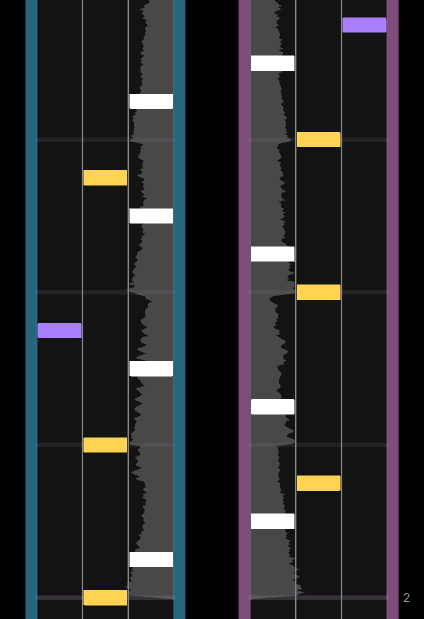 | Patterns where many notes of some consistent subdivision (often 16ths) have to be hit in quick succession. Does not take any specific shape, though you may see small instances of rolls, stairs, or trills within a larger stream. Excessively long streams are often called “deathstreams.” Use Examples: Luminous Race HY, Futari no Sekai EX |
Holdstreams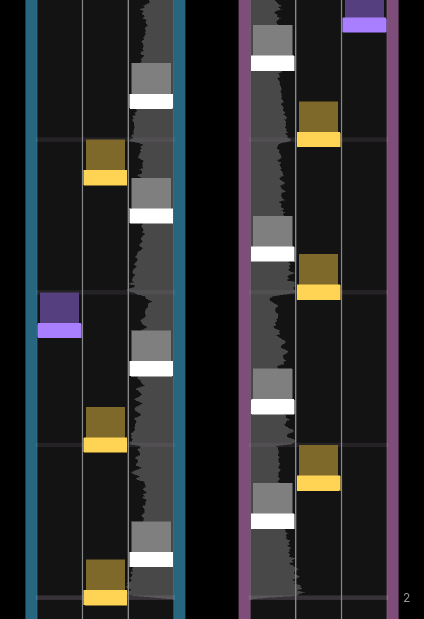 | Streams where the taps notes are replaced with holds. Plays practically the same as regular streams at a high enough BPM, but it contributes double the combo. Great for representing lesser subdivisions of notes that would be excessively difficult (i.e. representing 32nd kicks with a 16th holdstream). Use Examples: Fly Wit Me EX, valor/starcross EX |
Jumpstreams / Handstreams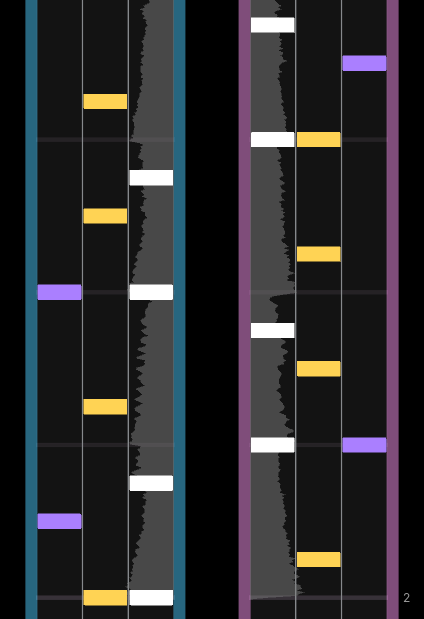 | Streams with doubles / chords placed at certain intervals (multiple notes on the same beat). The chords are typically placed to the rhythm of snares, kicks, or some other present sound. Also does not take any specific shape. Considerably harder than streams. Use Examples: Fly Wit Me EX, We Out Here EX |
Rolls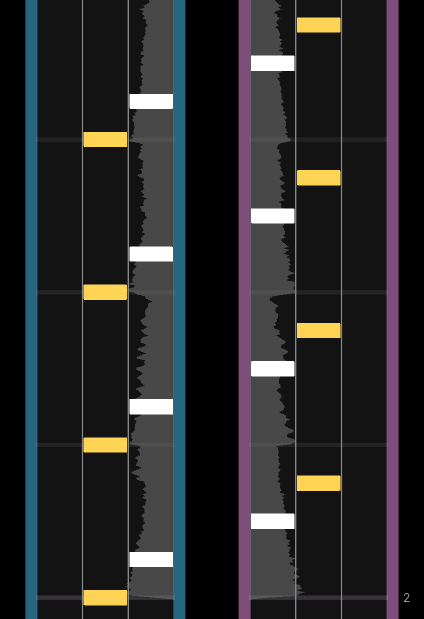 | Patterns where the notes ascend the lanes in one direction at a consistent subdivision, requiring the player “roll” their hand across some inputs. Can use both hands or one hand. Use Examples: Mahika HY, Station HY |
Staircases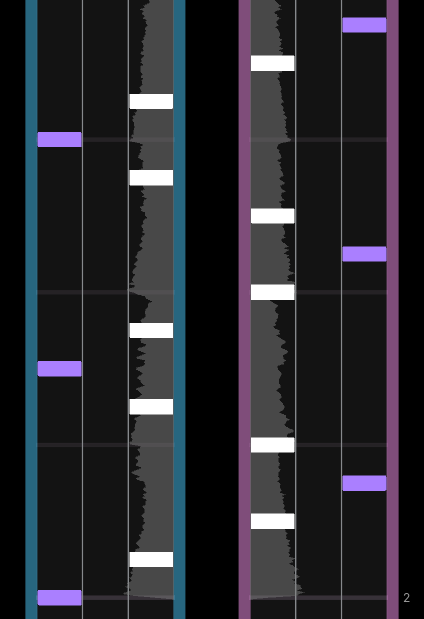 | Patterns where the notes ascend and descend lanes at a consistent subdivision. Considerably harder than rolls since they make you hit the outermost keys of the staircase more frequently than the other keys. Use Examples: Fly Wit Me HY, HYPRWARP HY |
Trills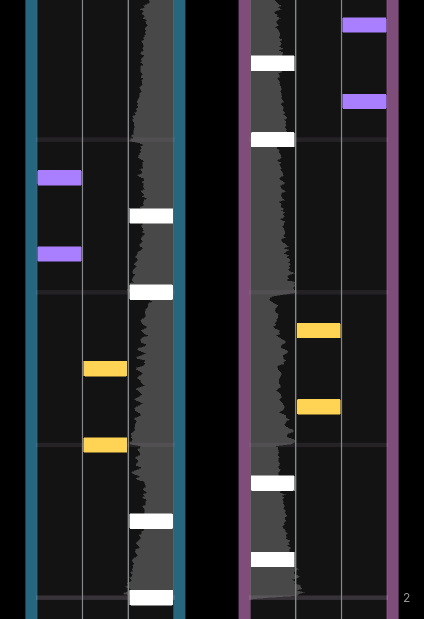 | Patterns where the player must rapidly alternate between two notes. Can use both hands or one hand. Can be broken up with additional notes to represent a different percussion. Use Examples: Frontliners HY, Candyland EX |
Jacks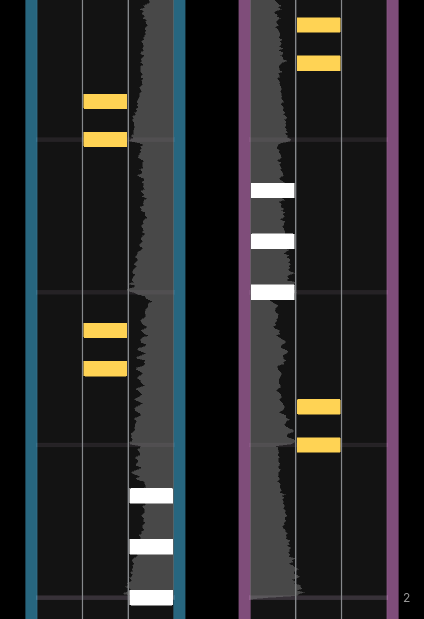 | Patterns where two notes happen in the same lane in rapid succession, requiring the player to hit a key like a jackhammer (repeatedly and swiftly). Often reserved to a double input in one lane (known as a minijack). Use Examples: Etiquette EX, City in the Clouds EX, Wonderblossom HY |
Bursts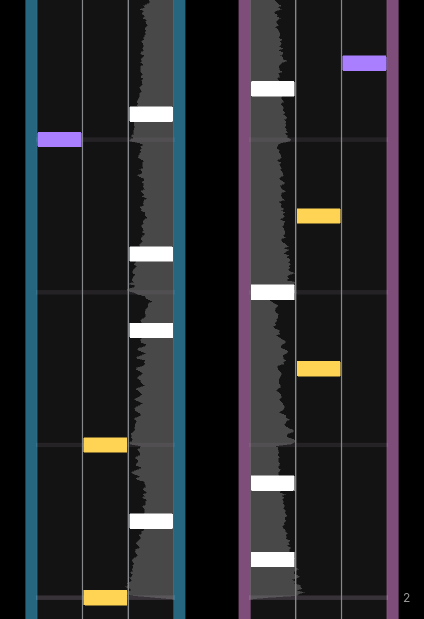 | Patterns consisting of dense, short groups of notes. Notes within the group are separated by a smaller subdivision than the notes surrounding it. Use Examples: We Out Here EX (24ths), DELTA ASCENDER HY, And So You Felt EX |
Chords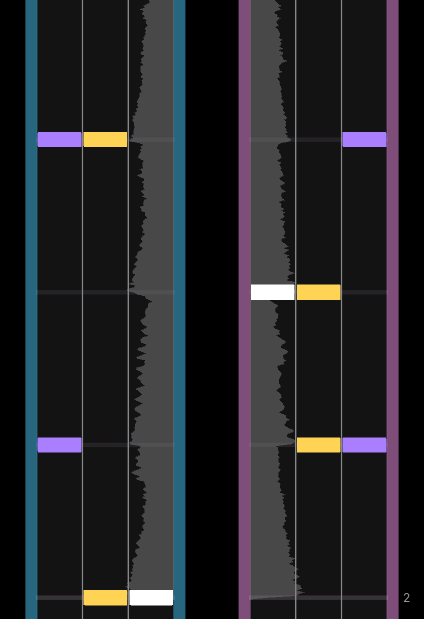 | Patterns where multiple notes land have the same timing and therefore must be hit simultaneously. Can either be one one side of the track (one-handed) or cover both sides of the track (two-handed). Use Examples: Knights of Khronelia EX, Waiting HY, HYPRWARP HY |
Chordholds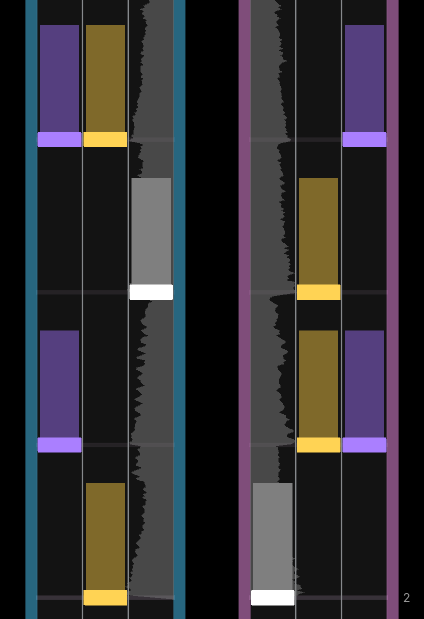 | Chords where the notes are hold notes. Can all end on the same beat or be staggered to suggest the fading out of sound. Use Examples: Wonderblossom HY, Fly Wit Me EX |
Flams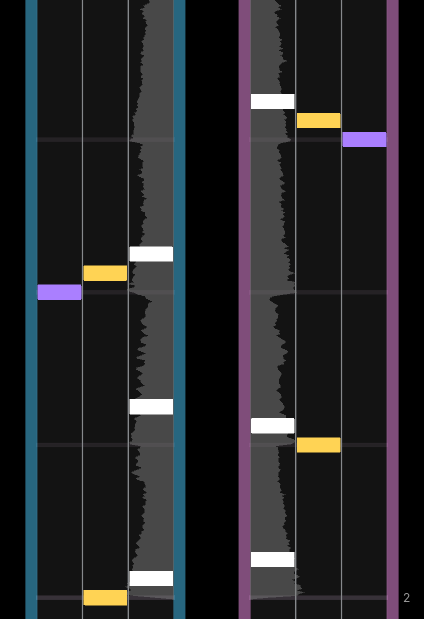 | Patterns that look like chords where some notes are delayed by a very small subdivision, but still grouped together visually. Use Examples: Resurrection HY, valor/starcross HY/EX |
Gallops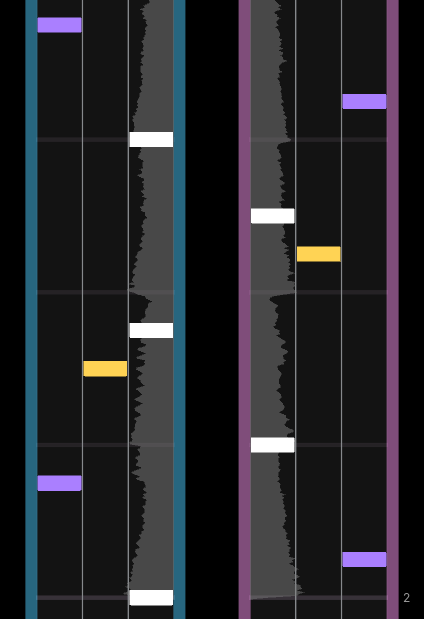 | Groups of two notes with a small subdivision between then where larger subdivisions separate them. Can be on both hands or one hand. Use Examples: City in the Clouds HY (1/16th→1/8th), Wonderblossom HY (1/12th→1/6th) |
LN Charting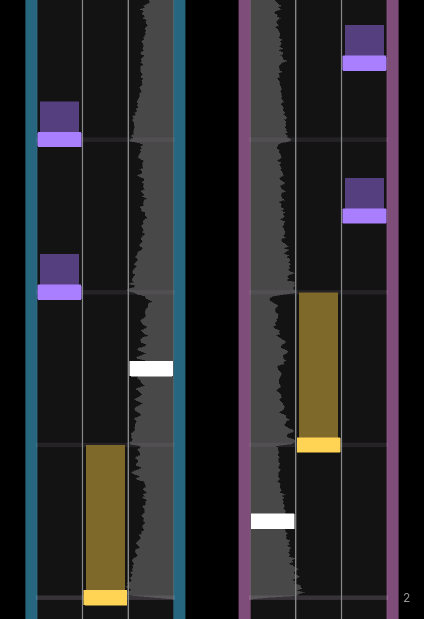 | Patterns that utilize hold notes. Typically, these patterns have long notes run simultaneously with tap notes following a different pattern. Sometimes, hold notes replace tap notes in another pattern for emphasis or readability. As hold notes in XDRV lack release timing, more expressiveness is possible without skyrocketing difficulty. Use Examples: Mahika HY, Rave Protocol EX, No Tomorrow HY |
Empty Space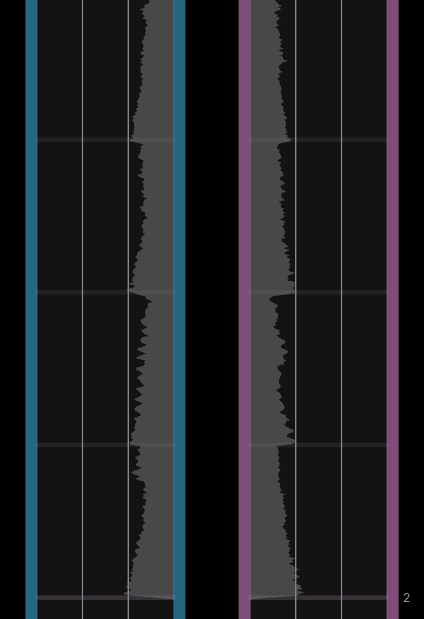 | Believe it or not, empty space can be a great tool for pacing a chart or emphasizing a part of a song. This is especially the case when you start implementing mods. Use Examples: cybercrush perplex HY, jittter HY, Dreams From Another World EX |
While trying to incorporate some of the above patterns can be a good thing, you should not try to compose your chart of only these basic patterns. You should still be willing to come up with new or modified patterns that better fit your song. Pure classic patterns are best used in moderation.
